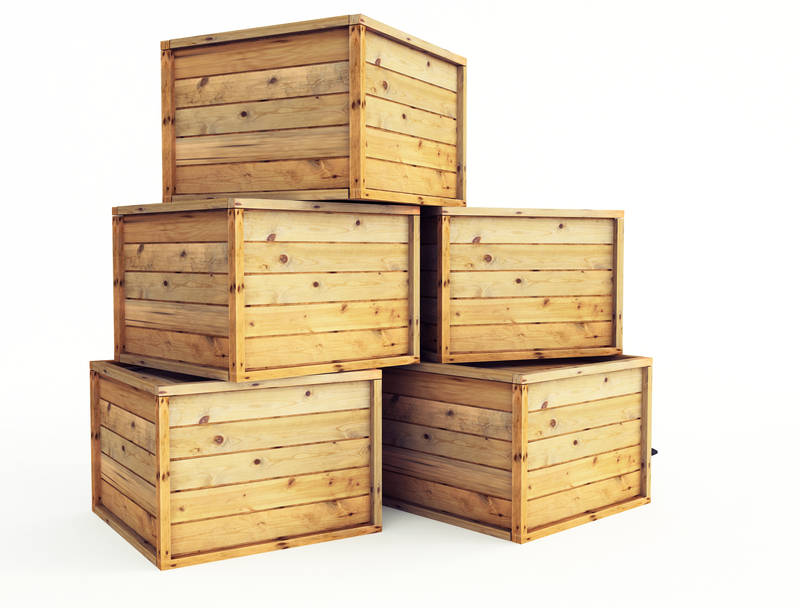Hassle-Free Bed and Mattress Relocation Techniques
Posted on 22/06/2025
Hassle-Free Bed and Mattress Relocation Techniques
Relocating beds and mattresses can be one of the most challenging aspects of moving to a new home. Improper handling can lead to damage, dirt, or even injury. Fortunately, by following proven bed and mattress moving techniques, you can make your transition smooth and stress-free. In this comprehensive guide, we'll cover everything you need to know about easy bed relocation and mattress moving solutions, from preparation to final placement in your new space.
Why Is Proper Bed and Mattress Moving Important?
Understanding the importance of safe mattress and bed transportation ensures that you not only prevent costly damage to your belongings but also avoid potential health issues. Beds and mattresses are significant investments and require careful handling to maintain their structural integrity.
- Preserve mattress quality: Rough handling can lead to sagging or tears.
- Protect bed frames: Comprehensive disassembly prevents structural damage.
- Reduce stress: Systematic techniques save time and eliminate frustration.

Preparation: Getting Ready for a Hassle-Free Move
The key to a smooth move is thorough preparation. Follow these steps to ensure your bed and mattress transportation goes off without a hitch:
1. Gather the Right Supplies
- Mattress bags or covers to shield against dust and stains
- Moving blankets to wrap bed components
- Furniture sliders or dollies for effortless shifting
- Screwdrivers and wrenches for disassembling the frame
- Plastic or zip bags for screws and bolts
- Labeling tape and markers to keep parts organized
2. Measure Doorways, Hallways, and the Bed
Before you attempt to move anything, take accurate measurements of your mattress, bed frame, and all passageways. This step ensures your furniture relocation does not result in bottlenecks or property damage.
3. Clear the Path
Remove obstacles such as rugs, decor, or clutter from the moving route. This proactive step minimizes risks of tripping or dropping your valuable items during the bed and mattress relocation process.
Step-by-Step Bed and Mattress Relocation Methods
Step 1: Strip Bedding and Wash
Remove all sheets, comforters, and pillowcases. Launder them ahead of time so you'll have fresh bedding ready after the move.
Step 2: Disassemble the Bed Frame
- Take photos as you disassemble to aid with reassembly.
- Put all small parts (screws, bolts, washers) into labeled bags and tape them to the headboard or another large component.
- If your bed frame is particularly complex, consider using colored tape to match parts and their original locations.
Step 3: Protect and Pack the Mattress
A key part of hassle-free mattress moving is using a durable mattress bag. This will keep your mattress clean and free from pests or moisture during transit.
- Slide the mattress into the cover and seal it tightly.
- If moving in a wet climate, double-bag for extra protection against water or humidity.
- Use moving straps for added control.
Step 4: Secure the Bed Frame
Wrap headboards, footboards, and rails with moving blankets or bubble wrap. Secure with packing tape or rope, being careful not to wrap tape directly onto wooden or painted surfaces to avoid residue or damage.
Step 5: Transporting Beds and Mattresses Effectively
- For stairs or tight corners, maneuver mattresses vertically for minimal bending.
- Use furniture dollies or sliders for heavy or bulky bed frames.
- Teamwork matters! Always have a partner for lifting large mattresses to prevent personal injury and accidental drops.
Solutions for Specific Bed and Mattress Types
Relocating Memory Foam Mattresses
Memory foam mattresses are heavier and more pliable, but are also susceptible to bending and tearing. Here's how to move them properly:
- Never fold or bend excessively, as this may damage the internal structure.
- Place flat in a moving truck whenever possible.
- Use an extra thick memory foam mattress bag for proper support.
Moving Box Springs and Foundations
Box springs often feature wood or metal frames which can splinter or bend if not handled cautiously.
- Wrap each box spring in a plastic cover.
- For split models, label left and right components for easy reassembly at your new home.
Handling Adjustable Beds
These require a bit of extra care due to their motorized hardware and delicate connections:
- Disconnect and safely pack all electronics and cables.
- Secure loose parts to prevent rattling or breakage.
- Refer to your owner's manual for manufacturer-approved bed moving techniques.
Short and Long-Distance Bed & Mattress Moving
Short-Distance Moves
For a move within the same city or building:
- Personal vehicles (like vans or pickup trucks) may suffice.
- Prioritize proper wrapping and loading to prevent minor dings or dirt.
- Keep transport time minimal to avoid environmental exposure.
Long-Distance or Cross-Country Moves
When your relocation covers greater distances, additional precautions are required:
- Layer padding around all parts for road bumps and vibrations.
- Consider professional moving services with specialized mattress transport options.
- Invest in insurance to protect against unlikely but possible losses.
Pro Tips for Stress-Free Bed Relocation
- Schedule the bed move last. Your mattress provides a handy spot to sit or rest while packing.
- Keep assembly tools handy for quick setup at the destination.
- For particularly bulky king-size beds, detach side rails or opt for professional help.
- Mark your new bedroom layout beforehand to ease the final placement process.
How to Move a Mattress Without Damaging It
Protecting your mattress from stains, tears, and misshaping is essential.
- Use mattress bags: These are vital, especially in dusty or humid environments.
- Avoid sharp bends: Roll, don't fold, to maintain surface tension.
- Lift with your legs, not your back, to prevent injury and maintain control.
- Don't set mattresses on dirty or wet surfaces during loading or unloading.
Bonus: Dealing With Tight Spaces
If doorways or stairwells are too narrow, use these simple methods:
- Tilt the mattress diagonally to maneuver through narrower spots.
- Remove doors from their hinges for a few extra inches of clearance.
- Consider a folding mattress if frequent moves are in your future.
Should You Hire Professional Mattress Movers?
While DIY moving can be affordable and flexible, there are times when hiring pros is the best choice:
- When dealing with heavy, oversize beds
- For moves involving complex assembly or antique furniture
- If navigating many stairs, elevators, or tight spaces
- To ensure your mattress warranty remains intact (some manufacturers require professional transportation)
Professional movers use specialized mattress relocation equipment and are insured against accidental damage, providing additional peace of mind.
Quick Checklist: Hassle-Free Bed and Mattress Move
- Purge unwanted bedding items before your move
- Clean and dry your mattress days before moving
- Disassemble frames and keep hardware together
- Use high-quality covers for transport
- Enlist help for heavy lifting
- Inspect mattress and frame for damage after arrival
- Reassemble as soon as possible to allow your mattress to resume normal shape
Environmental Considerations When Relocating Beds and Mattresses
Many old mattresses aren't worth moving. Mattress recycling facilities are now available in many cities, offering eco-friendly ways to dispose of what you no longer need before moving. If your mattress is over 8 years old or has structural issues, consider upgrading at your new home instead of relocating.
Donation & Resale
- Gently used mattresses in good condition may be eligible for donation to local shelters or sold online.
- Verify regulations about mattress resale in your state or region.
Final Assembly and Setup
When you reach your new destination, assemble the bed frame first in the bedroom. Carefully remove the mattress from its bag and allow it to air before setting it on the frame. For foam mattresses, this also allows them to expand back to original shape if compressed during the move.
- Secure all bolts and screws tightly for a stable bed.
- Double-check that no parts are missing.
- Wipe down surfaces to remove any dust or residue from the move.
- Make your bed and enjoy a good night's sleep in your new home!

Frequently Asked Questions: Bed and Mattress Relocation
- Can I roll up my mattress for moving?
Some hybrid or all-foam mattresses can be carefully rolled, but check manufacturer guidelines. Never try to roll an innerspring mattress. - What if my mattress gets wet during the move?
Dry thoroughly as soon as possible to prevent mold. Use fans, sunlight, and dehumidifiers as needed. - Is "mattress lifting" safe for my back?
To avoid injury, always lift with your legs and keep the mattress close to your center of gravity. Don't lift more than you can comfortably handle--get help!
Conclusion: Your Path to Effortless Bed and Mattress Relocation
Moving your bed and mattress doesn't have to be an ordeal. By following the above hassle-free bed and mattress moving tips, using the right packing supplies, and enlisting help when needed, you'll protect your investment and enjoy a seamless transition to your new home. Whether you opt for professional movers or the DIY approach, preparation, care, and technique are your keys to success.
Ready for your next move? Keep this guide handy to ensure your bed and mattress relocation is smooth, safe, and--most importantly--restorative for your peace of mind!



